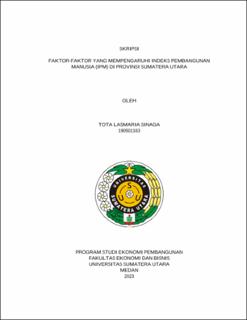Faktor-Faktor yang Mempengaruhi Indeks Pembangunan Manusia (IPM) di Provinsi Sumatera Utara
Abstract
The Human Development Index (IPM) is a comparative measure of the dimensions of life expectancy, education, and a decent standard of living in each country or region. The three dimensions have a very broad meaning and are related to many factors. Like measuring the dimensions of health, life expectancy is used. Then to measure the dimensions of knowledge used literacy rate indicators and the average length of schooling. Furthermore, to measure the dimensions of life, it is feasible to use purchasing power indicators. This study aims to determine the factors that influence the Human Development Index in Regencies and Cities of North Sumatra Province in 2017-2021.
This research is a quantitative research using Times Series and Cross Section data. Cross Section data in this study there are 33 Regencies and Cities in North Sumatra Province, while the Time Series data in this study are from 2017 to 2021, using secondary data in the form of panel data whose data were obtained from the Central Statistics Agency (CSA). By first choosing which method is accurate between the Common Effect Model, Fixed Effect, and Random Effect by testing the Chow test and Hausman test methods and also statistical tests through the determination test, F test and t test.
This study found that all the results are in accordance with the hypothesis. PDRB per capita has a positive and significant effect, the average length of schooling has a positive and significant effect and the average length of schooling has a positive and significant effect on the Human Development Index. the number of poor people has a negative and significant effect on the Human Development Index.
Collections
- Undergraduate Theses [2751]

